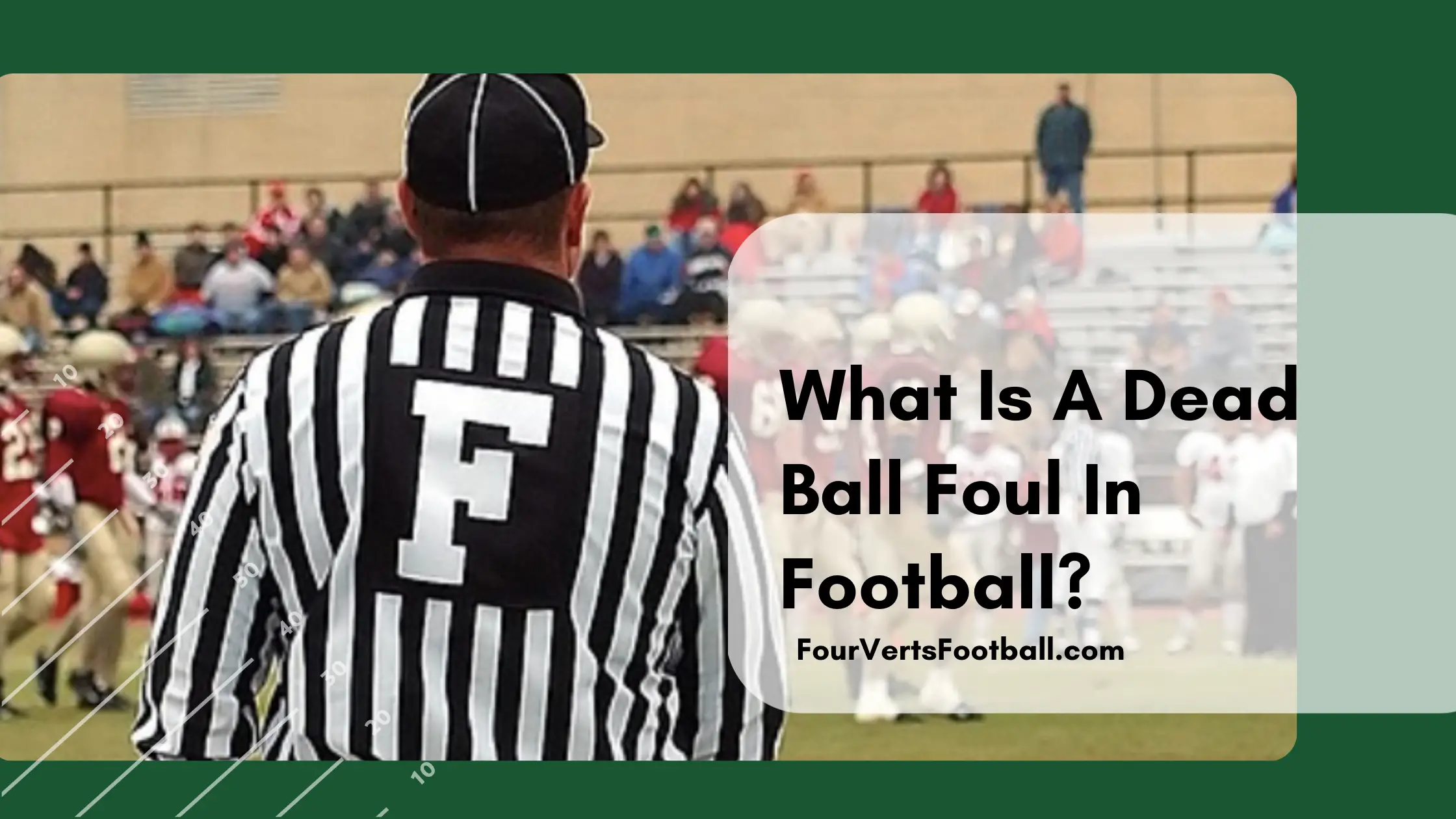A dead ball foul at the wrong time can determine whether or not your team wins or loses the game. The trouble is many fans do not know what this piece of football terminology means.
A dead ball foul in football is a penalty that occurs after the play has concluded. Since it occurred once the play was finished it will have no bearing on the previous play. Instead, the penalty yardage will be applied from the location the last play ended.
To get a better understanding of what a dead ball foul is you must first understand a live ball versus a dead ball.
A live ball refers to when the play is still ongoing. In other words, a ball is live from the second the ball is snapped to the moment the officials blow their whistle to signify the end of the play.
A dead ball on the other hand refers to any action that goes on in between plays.
Live Ball Foul Versus Dead Ball Foul
The main difference between a live ball and dead ball foul is that live ball fouls are fouls that are committed during a play while a dead ball foul is committed after the play has concluded.
A live ball foul if accepted is going to negate what happened in the previous play to a certain extent.
For example, if there was a ten-yard pass but an offensive holding penalty was called the ten-yard pass will be negated and the team will move ten yards back from the line of scrimmage.
A dead-ball foul on the other hand is not going to affect the previous play as it occurred after the play was finished. Say there was a ten-yard pass and a player was called for taunting after the play.
This penalty would not negate the catch, instead, the penalty yardage would be assessed from the location the player was downed after making the catch.
In short, dead-ball fouls are assessed from where the play ended and live-ball fouls are usually assessed from where the play started.
Common Dead Ball Fouls
Now that you understand what a dead ball foul is and how they are assessed you may be wondering what kind of penalties are committed after the play.
Below we will break down some of the most common penalties called once the play has been completed.
Delay Of Game
Delay of game is a penalty that is always going to be a dead ball foul. The reason for this is that this penalty only takes place when a team is delaying the start of the next play.
By definition, that means this penalty can only occur prior to a play. The most common delay of game penalty occurs when a team fails to snap the ball before the play clock runs out.
If a team takes too long to start the play they will be given a five-yard penalty. Additionally, a delay of game penalty can get called after a play is over. If a player spikes or throws the ball after any play other than a touchdown he can earn himself this dead-ball foul.
Taunting
Taunting is a dead ball foul that has become notorious in the 2021-2022 NFL season. This penalty has always been around in the NFL but was given a specific emphasis in the 2021 season.
Referees were told to watch closely for this penalty as the NFL began to crack down on taunting.
A taunting penalty is going to take place after a play is completed. If one player decides to get into another player’s face after the play this penalty will be called.
Since it occurs after the play the penalty yardage is assessed from the location where the last play ended.
12 Men In The Huddle
Another foul you may see called between plays against the defense is twelve men in the huddle. If the officials notice there are twelve players on defense in the huddle a penalty will be called.
Since it is in the huddle this penalty must take place before the play which makes it a dead-ball foul.
A live ball foul can also be called for having too many men on the field. Though this penalty is referred to as too many men on the field as opposed to twelve men in the huddle.


nfl rules– three dead ball fouls by one team and two by the other. what is the penalty enforcement ?